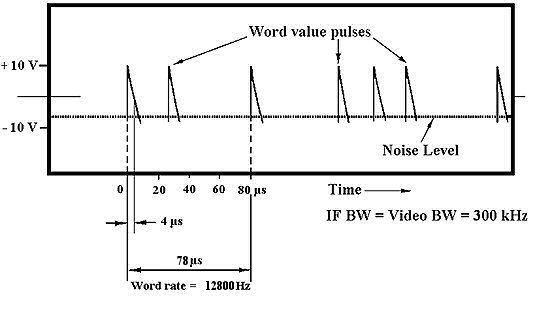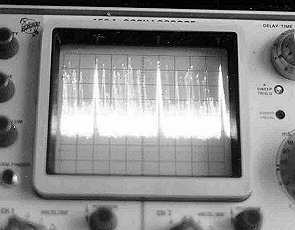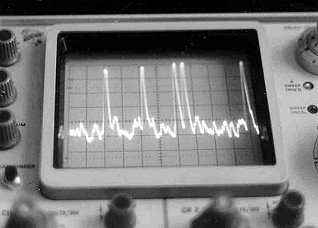
Sven Grahn, Sollentuna, Sweden
This type of telemetry was used by many types of automated and piloted spacecraft launched by the Soviet Union. The description below is based on my own observations of this signal. In all probability my observations only cover a subset of this basic telemetry system which probably is the RTS-9 system.
In this pulsed AM transmission 4 microsecond long pulses are transmitted every 78 microseconds. These "marker" pulses define words in the telemetry format. Within each such interval a word value pulse is transmitted. Its position in the 78 microsecond word interval defineds the particluar word value transmitted. Therefore the telemetry system is called pulse-position modulated amplitude modulation (PPM-AM). There is also a second mode of the telemetry system with word interval length equal to 96 microseconds. The figure below illustrates the pinciple. It shows a simplified sketch of the oscilloscope output from a Nems-Clarke 1302A telemetry receiver.

PPM-AM signals on 166.0 MHz received on August 16, 1981 from Cosmos 1286 (81-72A) an EORSAT (Elint Ocean Reconnaisance satellite) launched from Baikonur on August 4, 1981 into a 432-445 km orbit inclined at 65o.
 Free-running time-base. Word-definition "marker" pulses clearly visible,word-value pulses form "fog" |
 Single-sweep. Two words visible, the left one at 50% of distance between markers, the right one at 10%. |
![]()
Copyright © 1996 Sven Grahn